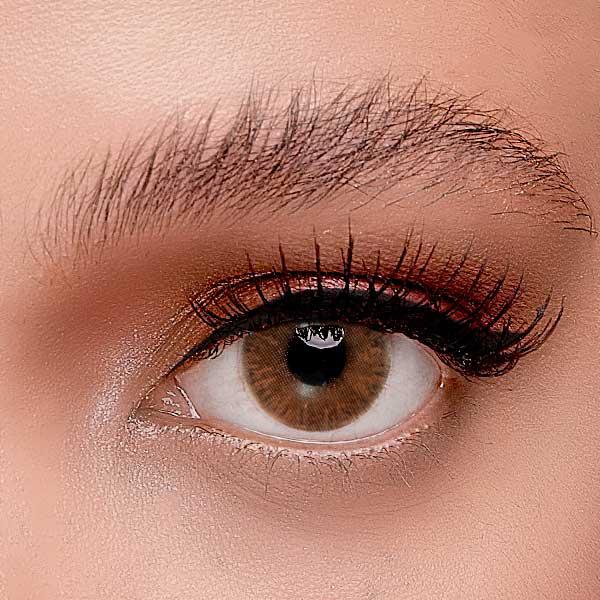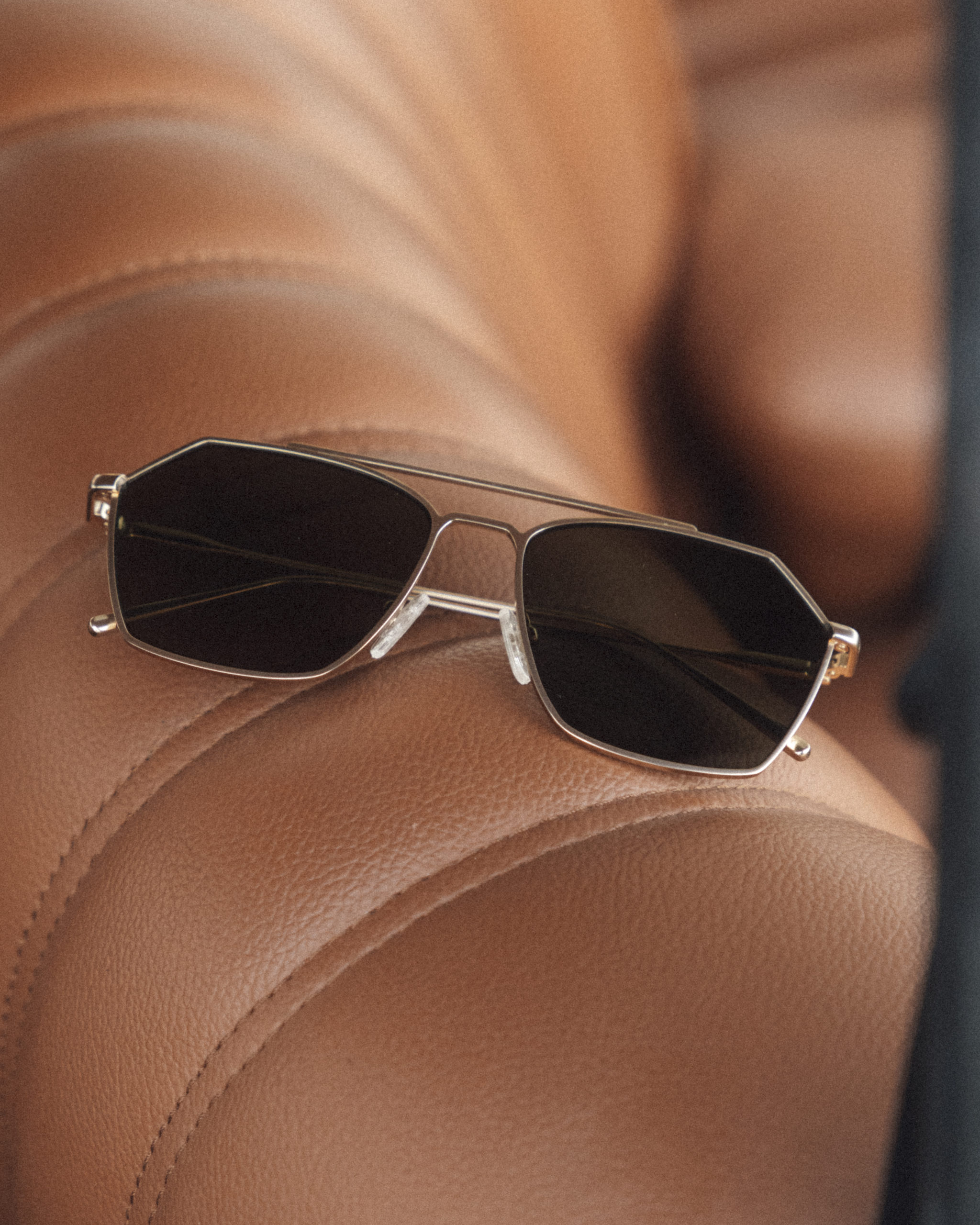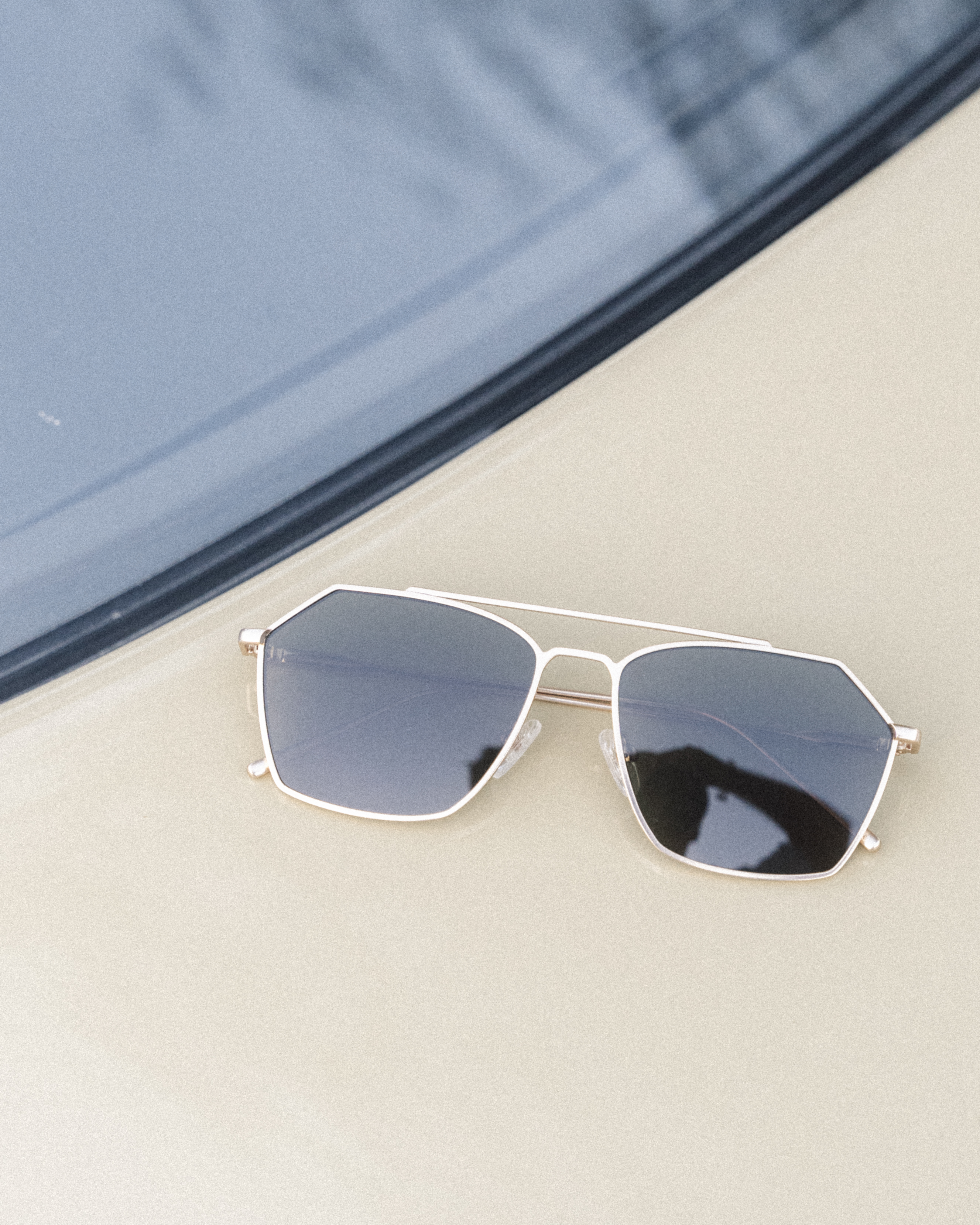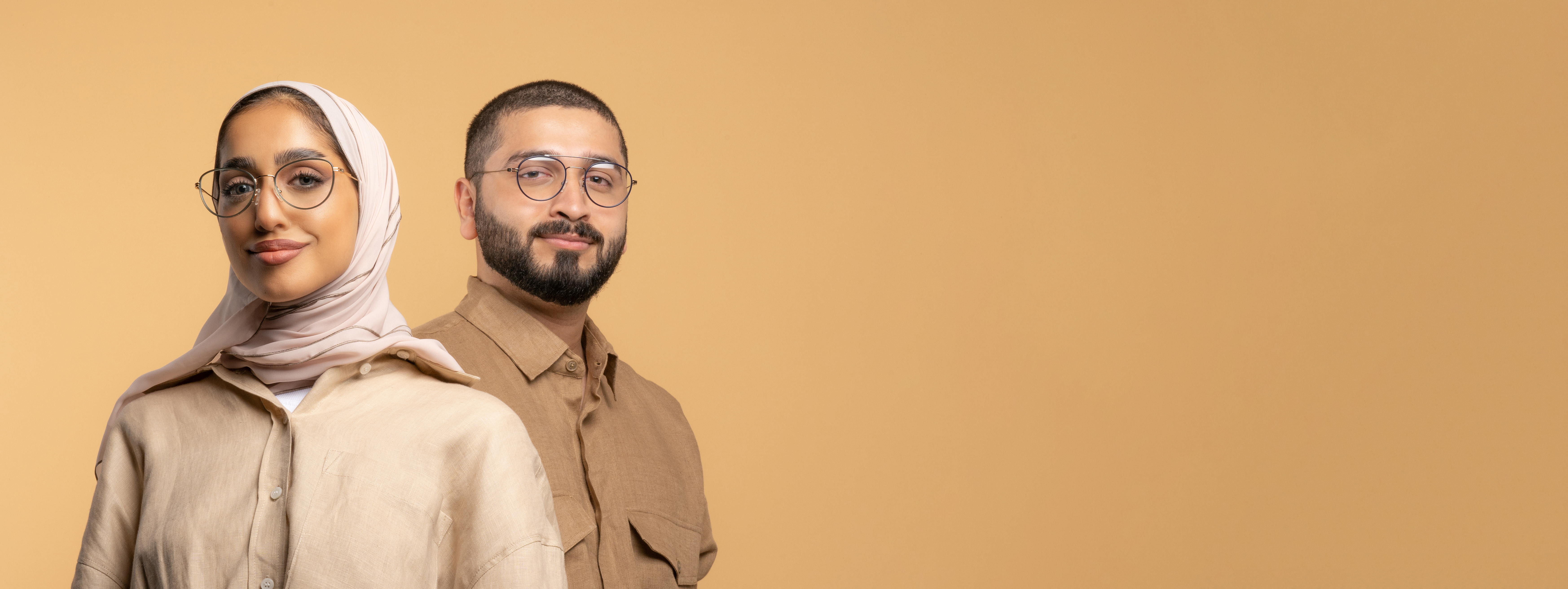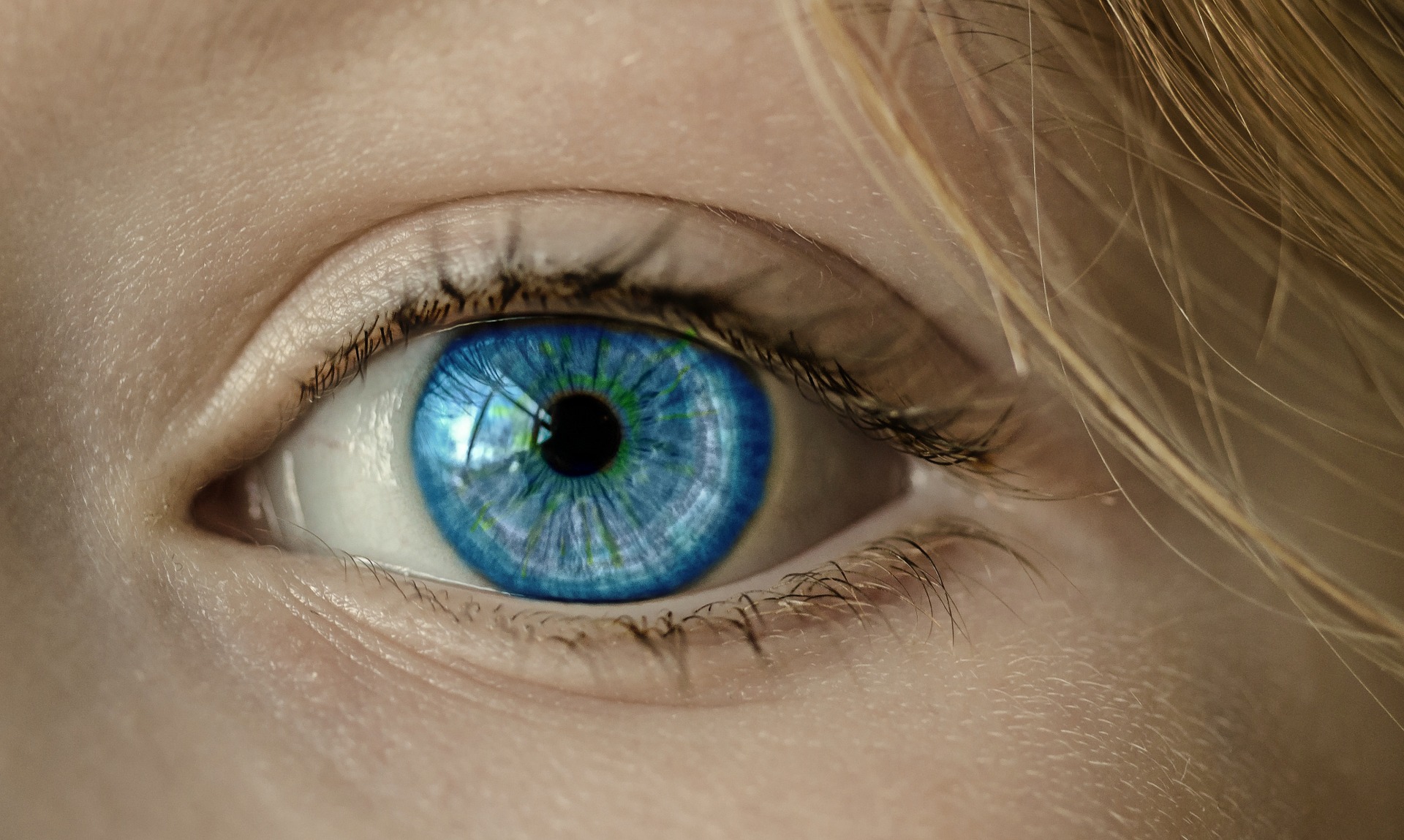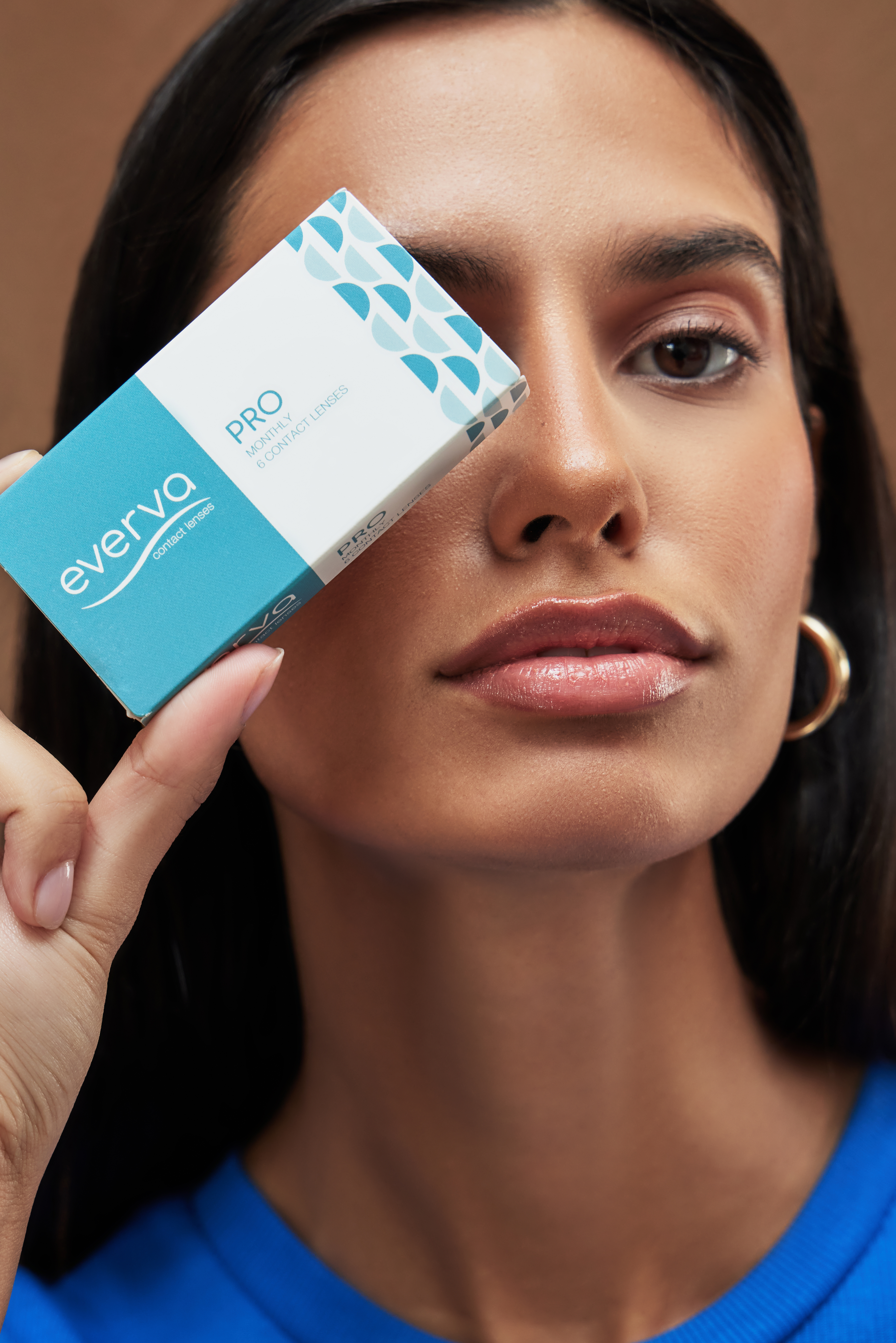How to Measure Your Pupillary Distance at Home
Precisely measuring your pupillary distance (PD) is vital with regard to acquiring appropriately fitting eyewear, whether it’s contact lenses or prescription glasses. Pupillary Distance (PD) means the distance that exists between the centers of the pupils. It plays a relevant role in making sure that your lens’ optical center is in perfect alignment with your eyes. While specialists typically measure PD during an eye examination, it’s possible to measure this at home with near precision.
If you are looking for a step-by-step pupillary distance guide to aid you in measuring PD, read on.
 Man wearing eyeglasses (EYEWA1553)
Man wearing eyeglasses (EYEWA1553)
What is Pupillary Distance?
Knowing how to measure pupillary distance is a good skill to have, especially if you have weak eyesight and wear contact lenses or eyeglasses. Pupillary distance is frequently abbreviated as PD. Simply put, it is the measurement of the space between the pupils, and it is expressed in millimeters. PD is a crucial parameter when crafting any eyewear, as it determines the location of the placement of the optical center of the lenses to optimize vision correction. Accurate PD measurements make sure that the lenses are aligned with your eyes appropriately, reducing any potential eye strain and boosting visual clarity.
 Three stylish eyeglasses displayed (EYEWA1553)
Three stylish eyeglasses displayed (EYEWA1553)
Tools Needed to Measure Pupillary Distance
You may think you need an eye care professional to precisely measure your PD, but you will be surprised at how easy it is to execute DIY pupillary distance measurement at home. Once you know you have to correct your vision with eyeglasses or contact lenses, you can perform this process at home. Gather the tools you require:
- A ruler with markings in millimeters: Make sure that the ruler is sufficiently long to span the distance across your eyes while still maintaining precision.
- A mirror: To make your PD measurement all the more precise, you will need a mirror that is lit well. This should be large enough so that it reflects your whole face. See that the mirror has no scratches or marks on it, so your eyes can be seen clearly.
- A pencil/a piece of tape: These are used to adequately mark points of reference while the process of measurement is on. The key to knowing how to measure pupillary distance with ease is understanding how this simple measurement works.
 A couple wearing eyeglasses (EYEWA1757)
A couple wearing eyeglasses (EYEWA1757)
How to Measure Pupillary Distance at Home
You should note that, for a person who wears eyeglasses or contact lenses, pupillary distance measurement can be a turning point in getting the right eyewear. PD measurement is simple if you follow some step-by-step instructions as precisely as possible.
Step 1: Stand in front of your mirror
The first step to properly knowing how to measure pupillary distance is to take a position at a comfortable distance in front of your mirror. Your face should be level and straight with reference to the mirror. Additionally, it is also important to ensure that there is enough lighting to see your pupils clearly.
Step 2: Remove your eyeglasses (if this is applicable)
In case you wear eyeglasses or even contact lenses, it is suggested that you remove them. You should make sure that your eyes remain in a natural state for this process. Anything that hinders the process will not render it accurate, and eyeglasses or contact lenses tend to interfere with accurate measurement. The whole idea of the process is to get as perfect as possible PD measurement.
Step 3: The ruler should be held horizontally, aligned with your eyebrow
The only way to ensure accuracy with DIY pupillary distance measurement is to follow instructions as best you can. With your hand as steady as possible, you must hold the ruler against your eyebrow. The ruler should be held horizontally across your brow. It should be held in such a way that it is positioned a little above the eyes. See that you hold the ruler straight and level. The “0” mark on the ruler should be at the center of your face.
Step 4: Focus on an object in the distance
To ensure that your eyes are at their natural resting state and aligned, focus on any distant object, such as a spot on a wall at the back of the mirror. In an accurate pupillary distance guide, you will always find this step one of the most important.
Step 5: Measure the space between the pupils
Now, it is the time to measure the distance that lies between your pupils. Make sure the ruler is held steadily against your eyebrow. Start with your right eye. You must align the zero mark on the ruler at your pupil. Now, measure the distance that goes from your right pupil to your left pupil. This is the pupillary distance. Take note of the measurement in millimeters. As you can see, how to measure pupillary distance is not that challenging to do at home. The millimeter measurement that aligns with your left pupil is the one you want.
Step 6: Repeat for accuracy
In this pupillary distance guide, we recommend you repeat the process for measuring the distance between the pupils of your eyes. This ensures more precision in measurement. You may repeat the set of steps five or six times. If you do get different results in your home PD measurement, you can take the average of these results. You can master how to measure pupillary distance in the comfort of your home and save yourself a visit to the optometrist.
 Boxes of contact lenses (EYE00044-(1))
Boxes of contact lenses (EYE00044-(1))
Common Mistakes in PD Measurement and How to Avoid Them
Measuring the pupillary distance at home is quite straightforward. However, there are some common mistakes to consider. In DIY pupillary distance measurement, you must be aware of the following:
- Misalignment of your ruler: Ensure the ruler is level and straight while measuring. Slanted/tilted rulers result in inaccurate measurements.
- Parallax errors: Be careful of parallax errors, which occur when your ruler and pupils are not aligned/on the identical plane. You have to keep your head and eyes absolutely straight and prevent your head from tilting while you measure the distance.
- Incorrect units of measurement: Re-check that your ruler has markings in millimeters. Measuring in units other than millimeters may lead to improper PD measurement.
- Imprecise focus: See that you focus on any distant object so that you can relax your eyes. This lets you achieve an as natural as possible and as accurate as possible DIY pupillary distance measurement.
Get properly fitting eyeglasses today. Head over to Eyewa today.
 Boxes of ACUVUE MOIST contact lenses (EYE00044-(1)
Boxes of ACUVUE MOIST contact lenses (EYE00044-(1)
FAQs on How to Measure Your Pupillary Distance
Can I measure the pupillary distance on my own, or do I need someone else’s help?
You can easily undertake PD measurement at home on your own. The key is understanding pupillary distance. Nonetheless, if you have someone to assist you, your results may be more accurate.
Is the pupillary distance identical for every person?
The pupillary distance varies from one individual to another. It is unique to every person.
Should I measure the pupillary distance with my glasses off or on?
It is advised that you measure your pupillary distance with your eyeglasses off so you get a more natural measure of your pupillary distance.
Can I use a virtual measuring tool available online?
You can use a tool online, but you will, at best, get an estimation of your pupillary distance. Additionally, online tools do not prove to be as accurate as a ruler’s measurement.
Why is pupillary distance essential to know about?
Knowing how to measure pupillary distance is essential as this lets you understand how to select the best-fitted eyewear for your unique requirements.
Conclusion
Accurately knowing how to measure the pupillary distance at home is critical for obtaining eyewear that is fitted well and optimizes clarity of vision. With eyeglasses that are well-fitted, eye strain gets remarkably reduced, and this boosts your visual health. The way to measure your pupillary distance is simple, as you can follow a few simple steps to determine the accuracy of the distance between your eyes’ pupils. If you face any difficulties with PD measurement at home, you can always visit your eyecare practitioner.

